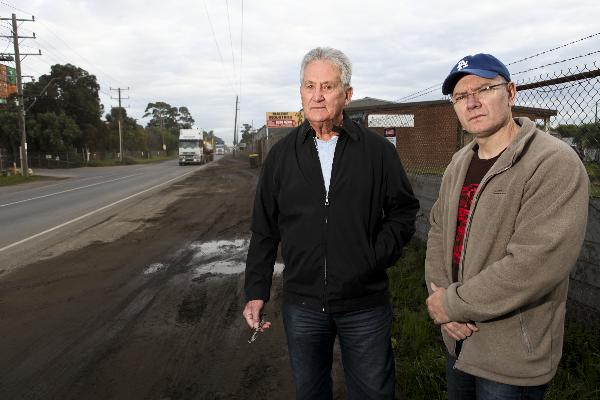By ALESHA CAPONE
A BIGGER focus on businesses operating in Brooklyn is needed to bust toxic dust levels in the suburb, according to a community activist.
This year, Brooklyn recorded its 100th day since 2009 in which PM-10 dust levels exceeded recommended health levels.
The Environment Protection Authority (EPA) recommends people should only be exposed to five days per year when PM10 levels are high.
PM10 refers to dust particles which can cause medical problems if people are consistently exposed to them, including respiratory symptoms in healthy adults and children.
Bruce Light, from the Yarraville On the Nose Community Group, said the state EPA should not attribute the high Brooklyn dust levels on weather patterns and unsealed roads – such as Bunting Rd and Jones Rd.
“The focus must be on the industrial/transport activities in the Brooklyn Industrial Precinct and surrounding areas,” he said.
Mr Light said the State Government needed to legislate for container parks and trucking yards to conduct their business on sealed areas and for recycling operations to be inside enclosed buildings.
“In 2011/12, a temporary dust monitoring station was installed in Sunshine West approximately one kilometre north of the Brooklyn Industrial Precinct,” he said.
“Dust levels recorded at this location were within national and world health standards and similar, if not the same, as recordings observed at the West Footscray monitoring station.
“The weather in Sunshine West is exactly the same weather residents experience in Brooklyn.”
An EPA spokeswoman said a report on Brooklyn’s air monitoring said “hot, dry and windy conditions” led to a corresponding increase in rising PM-10 levels last year.
The spokeswoman said a comprehensive EPA compliance program for dust producing industries has seen 29 pollution abatement notices issued to businesses since last month.
“EPA uses the weather to help explain the fluctuations in the number of days exceeding the daily PM10 air quality objective from year to year,” she said.
“The weather doesn’t directly cause the poor air quality in Brooklyn, but it certainly can facilitate it.
“Due to the face that the Brooklyn area experiences northerly winds more frequently than east to south easterly winds in Sunshine West the air quality differs.”


